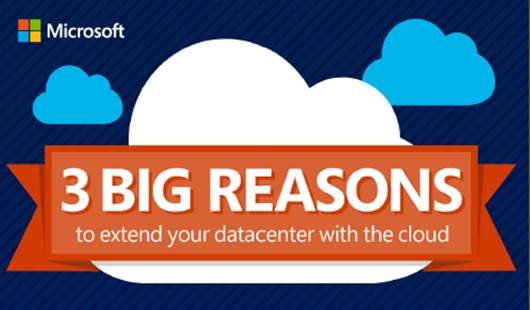The Hybrid Approach: Enhance Your Datacenter for the Modern Era of Business
Today more data is being pushed through the modern datacenter than ever. All of that data, and the need to deliver it to an increasingly mobile work force, is putting a lot of pressure on IT.
For a business looking to grow over the coming years as volumes of data erupt, building capacity to keep it on-premises — along with all the related security and provisioning issues — may not be feasible for long. To remain competitive, most businesses are thinking intelligently about incorporating the cloud into their IT.
On the other hand, going “all cloud” may only make sense for certain smaller companies, such as start-ups. Established companies have significant investments in IT. They have trained, knowledgeable staff and highly developed business processes.
For these companies, a hybrid cloud approach may make the most sense. By moving certain basic, yet critical workloads to the cloud, companies can free up datacenter resources to focus on business-critical compute and data-centric tasks, while at the same time gaining capabilities they may not have previously been able to afford.
Utilizing a hybrid approach can provide several critical advantages without the significant investment in time and money to upgrade and expand on-premise infrastructure.
Click here to see the reasons to extend your datacenter to the cloud
Finding the Right Mix
Like any IT decision, the hybrid architecture requires careful consideration of the company’s unique needs. What is the regulatory environment? Who will use the information, and how? In general, sensitive or heavily regulated data, or very large files, are candidates to remain on site. Backup data, mobile workloads, or those that experience heavy swings in demand may be good candidates for the cloud.
The following are four areas where companies just starting out with cloud can get the most bang for their buck:
- Identity and access management. Does a large percentage of the company’s staff work in the field? Moving this function to the cloud provides the important benefit of always-up-to-date security technologies — eliminating weekly or monthly updates from the shoulders of IT staff — while at the same time, the cloud facilitates remote access to business apps, creating more dynamic IT for the company.
- Datacenter extension. Is the company a retailer, broadcaster, or in another business that requires the ability to significantly scale up from time to time? In the cloud, virtual machines can be provisioned in a flash, delivering capacity on demand.
- Database and SQL as a service. Does the organization work heavily with data, or need to pull data from multiple sources and platforms? With modern cloud services such as Azure, there is no vendor lock-in: a Linux environment will run seamlessly, and cloud services can connect with data from sensors, or any computing platform. Once in the cloud, near limitless processing power is available to crunch the information however it’s needed.
- Disaster recovery and backup. Many companies see this critical function as a luxury and choose to invest elsewhere. The cloud has made true, redundant backup and recovery affordable, meaning just about any company can have a real disaster recovery strategy and get back online in minutes after an outage.
By moving just these areas to the cloud, companies can immediately gain capabilities they didn’t have, while freeing IT staff and architecture resources to support the business in other intelligent ways. While servers and hardware freed from these tasks can be leaned into other workloads such as line-of-business applications, IT staff can focus on supporting business groups with high-demand projects, rather than watching as business groups implement “rogue IT” projects that fall outside of company policies.
Common Considerations
One often-heard concern with moving certain aspects of the organization’s infrastructure to the cloud is management. Companies want a single, comprehensive, consistent way to manage the entire environment that allows them to seamlessly migrate workloads between virtual and physical machines.
The good news is, this is a key feature of mature cloud platforms today, such as Microsoft Azure, which offers a management console that integrates the entire spectrum of technologies into a single tool.
There’s also the human element. People naturally resist change, and may be hesitant to move away from familiar tools and processes. IT staff in particular may balk at heavy retraining or worry that their skills may become less relevant with the move.
However, many companies find that cloud services help to free IT staff from some mundane tasks such as running updates across multiple systems and installing, networking and maintaining hardware. With the extra time, IT pros can work more strategically, helping to design and implement new business solutions with real impact.
According to Gartner, 72 percent of enterprises are pursuing a cloud strategy today. If you’d like to learn more about what your company and IT staff can gain from a hybrid cloud strategy, visit the Microsoft Azure hybrid cloud page.
